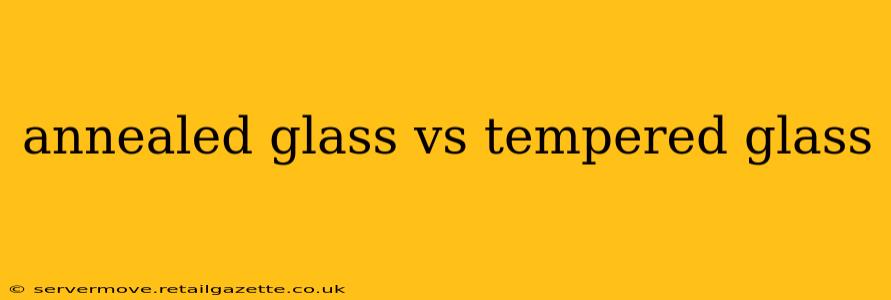Choosing the right type of glass for your project can significantly impact its safety, durability, and overall aesthetic. Two common types, annealed glass and tempered glass, offer distinct properties making them suitable for different applications. This comprehensive guide explores the key differences between annealed glass and tempered glass, helping you make an informed decision.
What is Annealed Glass?
Annealed glass, also known as float glass, is the standard glass you find in most windows and picture frames. It's created by slowly cooling molten glass, allowing it to relax and relieve internal stresses. This process results in a relatively soft and easily workable material. Its affordable price and ease of cutting make it a popular choice for many applications. However, its low strength and tendency to shatter into sharp shards upon breakage limits its use in safety-critical scenarios.
Advantages of Annealed Glass:
- Cost-effective: Annealed glass is generally the most affordable option.
- Easy to cut and shape: Its softness allows for easy manipulation and customization.
- Widely available: It's readily available from most glass suppliers.
Disadvantages of Annealed Glass:
- Low strength: It's prone to breakage under relatively low impact.
- Sharp shards upon breakage: Shattering into sharp pieces poses a safety hazard.
- Not suitable for high-stress applications: It's not ideal for applications requiring high strength or impact resistance.
What is Tempered Glass?
Tempered glass, also known as toughened glass or safety glass, is significantly stronger than annealed glass. It undergoes a heat treatment process where it's heated to a high temperature and then rapidly cooled. This rapid cooling introduces compressive stresses on the surface and tensile stresses within the core, making it much more resistant to impact and thermal shock. When tempered glass breaks, it shatters into small, relatively harmless granular pieces, minimizing the risk of injury.
Advantages of Tempered Glass:
- High strength and durability: It's significantly stronger and more resistant to impact than annealed glass.
- Safety features: It breaks into small, relatively harmless pieces, reducing injury risk.
- Thermal resistance: It can withstand significant temperature fluctuations.
- Suitable for high-stress applications: It's commonly used in applications where safety and durability are paramount.
Disadvantages of Tempered Glass:
- Higher cost: Tempered glass is more expensive than annealed glass.
- Difficult to cut and shape after tempering: Once tempered, it cannot be easily cut or modified. Any cutting or modification must be done before the tempering process.
- Cannot be easily repaired: Damaged tempered glass needs to be completely replaced.
Annealed Glass vs. Tempered Glass: Key Differences Summarized
| Feature | Annealed Glass | Tempered Glass |
|---|---|---|
| Strength | Low | High |
| Breakage Pattern | Sharp, large shards | Small, granular pieces |
| Cost | Low | High |
| Workability | Easy to cut and shape | Difficult to cut and shape after tempering |
| Safety | Low | High |
| Thermal Shock Resistance | Low | High |
What are the different types of tempered glass?
While the process is generally the same, there are variations in the type of tempered glass available, depending on the specific needs of the application. These variations might include different thicknesses, coatings (for added features like self-cleaning or UV protection), and specialized treatments to enhance performance in specific environments. Consulting with a glass supplier is crucial to determine the best type of tempered glass for your specific project.
Which type of glass is right for me?
The choice between annealed and tempered glass depends on the intended application. Annealed glass is suitable for applications where strength and safety are not primary concerns, such as picture frames or interior windows not subject to high impact. Tempered glass is the preferred choice for applications demanding high strength, impact resistance, and safety, such as automotive glass, shower doors, and storefront windows. Always prioritize safety and select the appropriate glass type based on the specific requirements and potential risks of the application.
